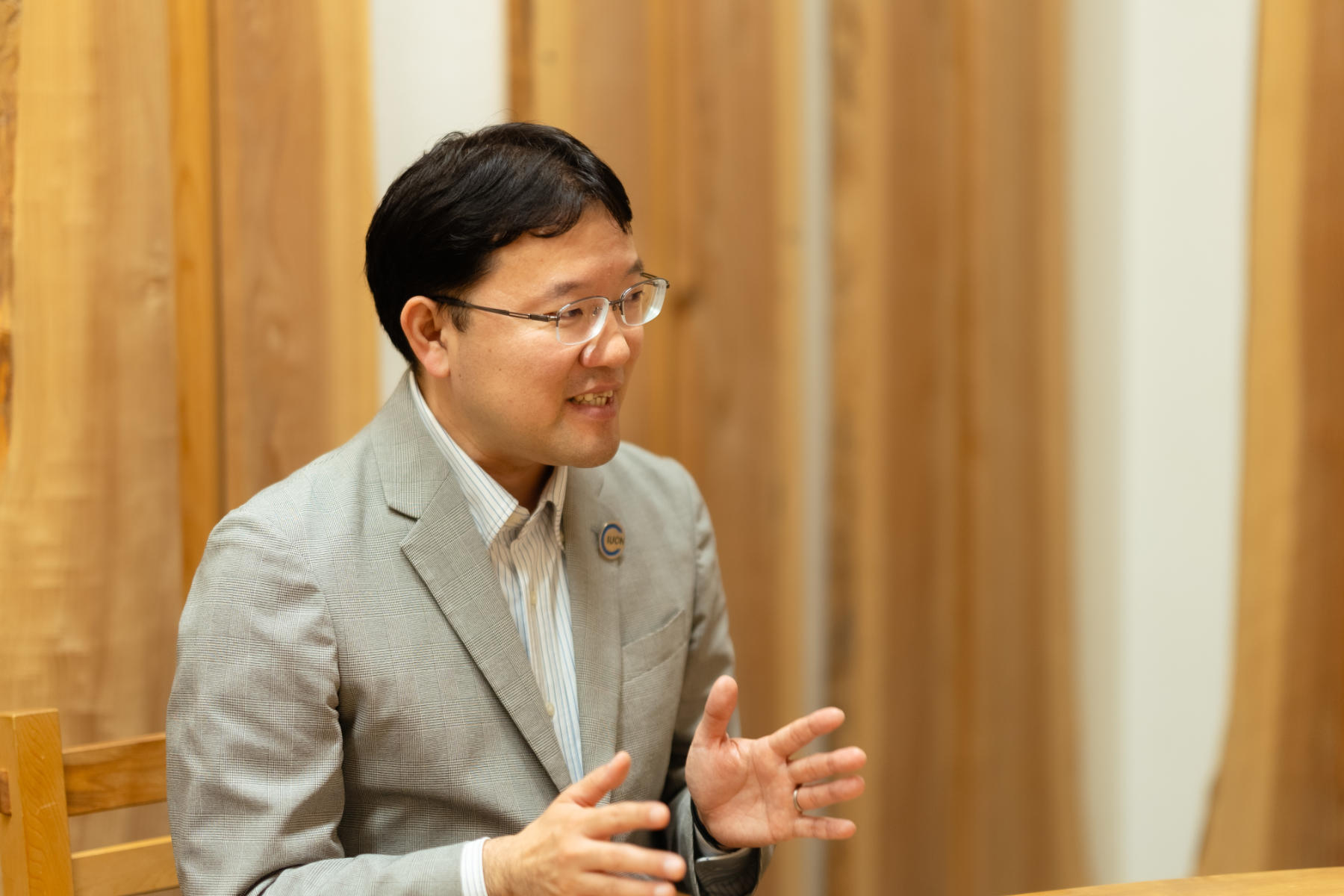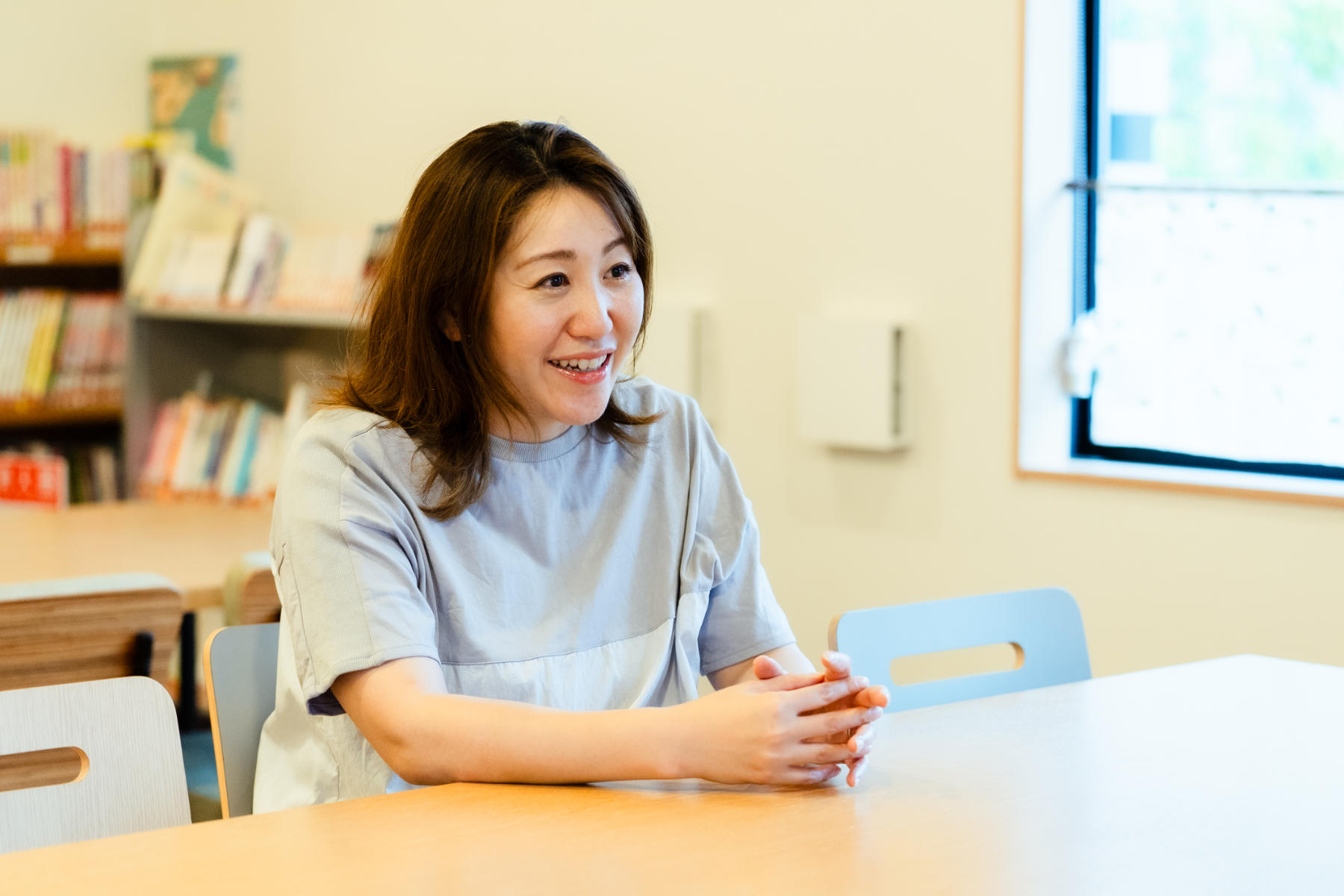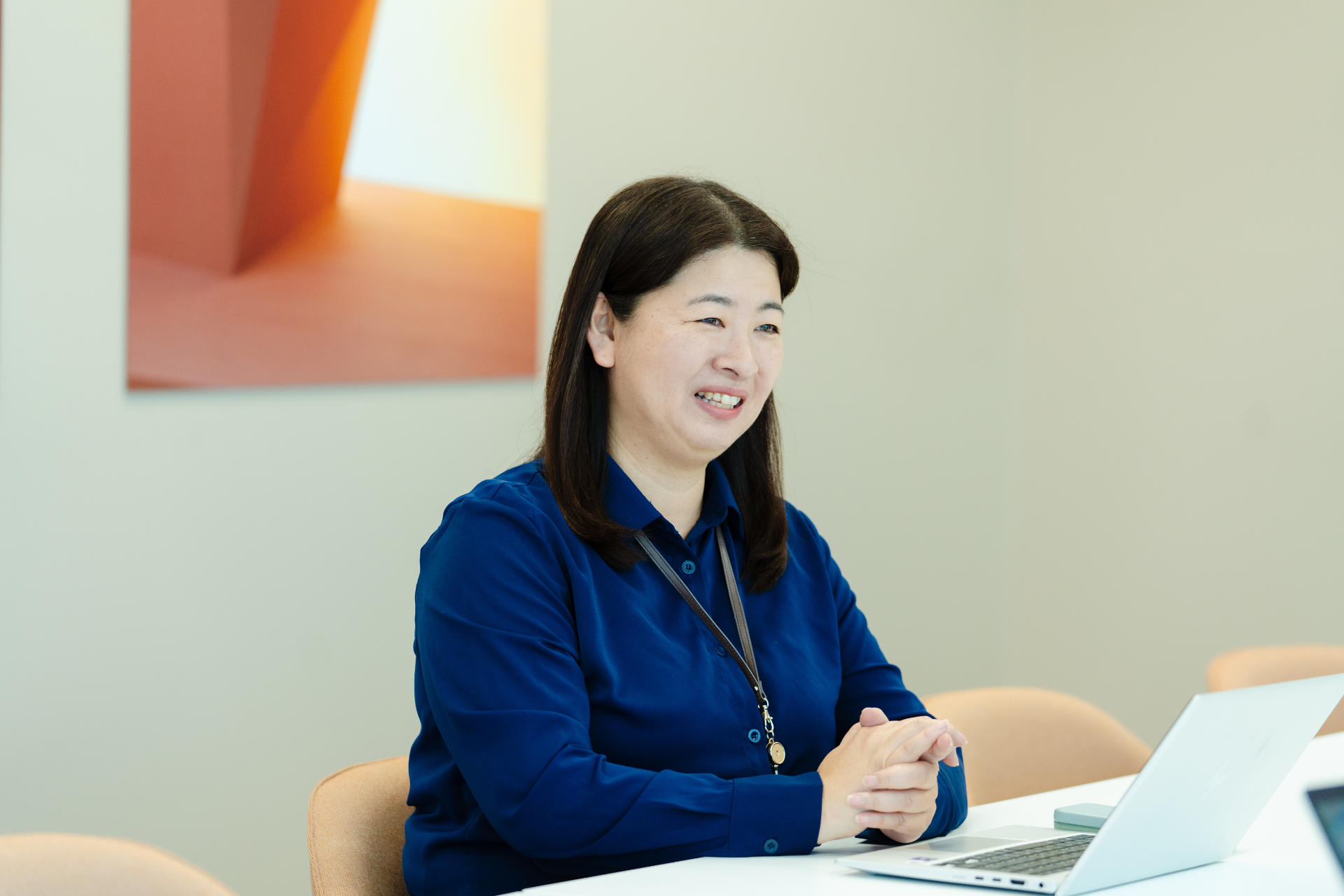CASE 18
Ninomiya Town Hall Policy and General Affairs Department,
Regional Policy Division,
Public Relations and Statistics Group
(November 2018 – March 2019)
Conducting PR training in order to strengthen Ninomiya Town Hall’s entire information dissemination capabilities Supporting improved communication across organizations
With a size of approximately 3 square kilometers, the town of Ninomiya is located along the coast of southwest Kanagawa prefecture. The population peaked in 1999 (Heisei 11) and has been declining ever since. However, in recent years a large number of new people have been attracted to the town and have relocated, and the curve of population decline has become more gradual. According to Mr. Yamashita, the head of Ninomiya’s public relations, “I love this town. It’s surrounded by the ocean and the mountains, and it’s a place where you can live in peace.” In order to improve the information dissemination capabilities of the entire town hall, Mr. Yamashita reached out to Hitoshizuku to request a training course in public relations. Our course constantly emphasized public relations as a process of relationship building while incorporating era appropriate techniques. We looked back over this training process and asked about subsequent staff awareness and changes in the town.
Exchanging business cards with Hitoshizuku made a big impression on me. I always knew I wanted to collaborate with them.

Mr. Masashi Yamashita, Ninomiya Town Hall Policy and General Affairs Department, Regional Policy Division, Public Relations and Statistics Group
Asuka Takahashi, Hitoshizuku supervisor (Takahashi):
We first met in June of 2018 when we discussed the information dissemination training you’d requested. After that we conducted a survey to understand the current situation, and then used that information as the basis for face-to-face interviews with the Ninomiya town hall staff. Once we had a better understanding of the situation and needs of the staff members, we held the training course in January 2019. Could you start by telling us what led you to request Hitoshizuku’s services?
Mr. Masashi Yamashita, Ninomiya Town Hall Policy and General Affairs Department, Regional Policy Division, Public Relations and Statistics Group (Mr. Yamashita):
This all started when a person in Ninomiya who’d collaborated with a promotion campaign offered to introduce me to Hitoshizuku’s CEO, Mr. Kokubo, saying he was someone I should meet and that it would be good for us to talk. About 2 years previously I had just relocated to the Public Relations and Statistics Group and didn’t know anything about public relations or how to promote the town. I thought it would be good if I could get some sort of hint from Mr. Kokubo, but once we met all of my preconceived notions of a PR company businessman were overturned.
Out of that first meeting, one of the things that really stands out to me is when we exchanged business cards. I’d never seen a business card where everything was written in hiragana, so even before we started talking, I had a feeling that this person, this company, was definitely going to be interesting! Hitoshizuku business cards are loaded with meaning and complexity, wouldn’t you say? They’re simple, but have a powerful impact. I felt like these cards were another strategy to express something about the company. Since they’re written in hiragana even children can read them, and it gives an overall impression of softness. I feel like Hitoshizuku’s flexibility is conveyed with one look at these business cards.
Takahashi:
Thank you. We’ve received a lot of comments about how both the company and employee names are all written in hiragana when we exchange business cards. It gives us a chance to talk about where the idea originated and what we’re trying to express through that.
Mr. Yamashita:
When Mr. Kokubo and I had a chance to talk, it turned out we had a lot in common with the way we thought and the way we did things, as well as what we both wanted to do going forward. I had been holding onto this feeling that it would be great to someday get guidance from his company, and I finally had the opportunity to do so through this training.
Conducting public relations training to strengthen information dissemination capabilities to meet the needs of changing times

The publication “PR Ninomiya” has supported public relations activities in the town and has evolved further since the town hall staff completed information dissemination training.
Takahashi:
It sounds like you had been keeping an eye on Hitoshizuku. Could you tell us what it was that made you feel an information dissemination training course was necessary for the Ninomiya Town Hall?
Mr. Yamashita:
Hitoshizuku is involved with PR for other regions and municipalities so I’m sure you’re already aware that a town hall doesn’t have the same scale and facilities as a ward office or a city hall. Inevitably the staff members end up having to manage a variety of tasks in their daily work. For example, in my case I’m responsible for a wide range of duties, including editing and publishing a PR document, updating our website, town promotion, and statistical work. Within a rapidly changing social situation the needs of the townspeople are increasing and the work the town hall does is also diversifying.
Up until now the PR document that we publish every month has been the center of our work, but we’ve had people in the town tell us that they haven’t seen it, or they don’t know about it, or that it doesn’t interest them. With the online and social media environment becoming more established I felt like we needed to be adjusting our public relations approach, but I’m often overwhelmed with my daily tasks and I was struggling to figure out what to do next.
Takahashi:
Right, so that was when you decided to hold a training course to improve the information dissemination capabilities for the entire town hall. I thought it was a wonderful idea to set up a public relations leader in each of the 20 departments.
Mr. Yamashita:
The information the Ninomiya Town Hall sends out comes in all shapes and sizes, and the targets we have for that information also vary widely. Each department has only a small number of staff working hard on a lot of different tasks, but it ultimately doesn’t mean anything if the PR isn’t successful because that hard work won’t connect to resident services. In addition to that, I feel like there’s a limit to having a single department responsible for the town hall’s entire public relations information. As a way to start to address this I wanted people in each department working in their specialized areas to also be trained in public relations with the goal of being able to disseminate information efficiently and effectively.
This is why I decided to invite a lecturer from Ninomiya Town Hall to hold a training course that would be easy for all staff members to join. As I was vaguely thinking how it would be nice to do something interesting, Mr. Kokubo came to mind. He’s someone who has an air of approachability.
Takahashi:
After that first consultation we spoke with Kokubo and we agreed that we wanted to design the training program around your ideas before moving forward with the preparations. Once the training was over, how did you feel?
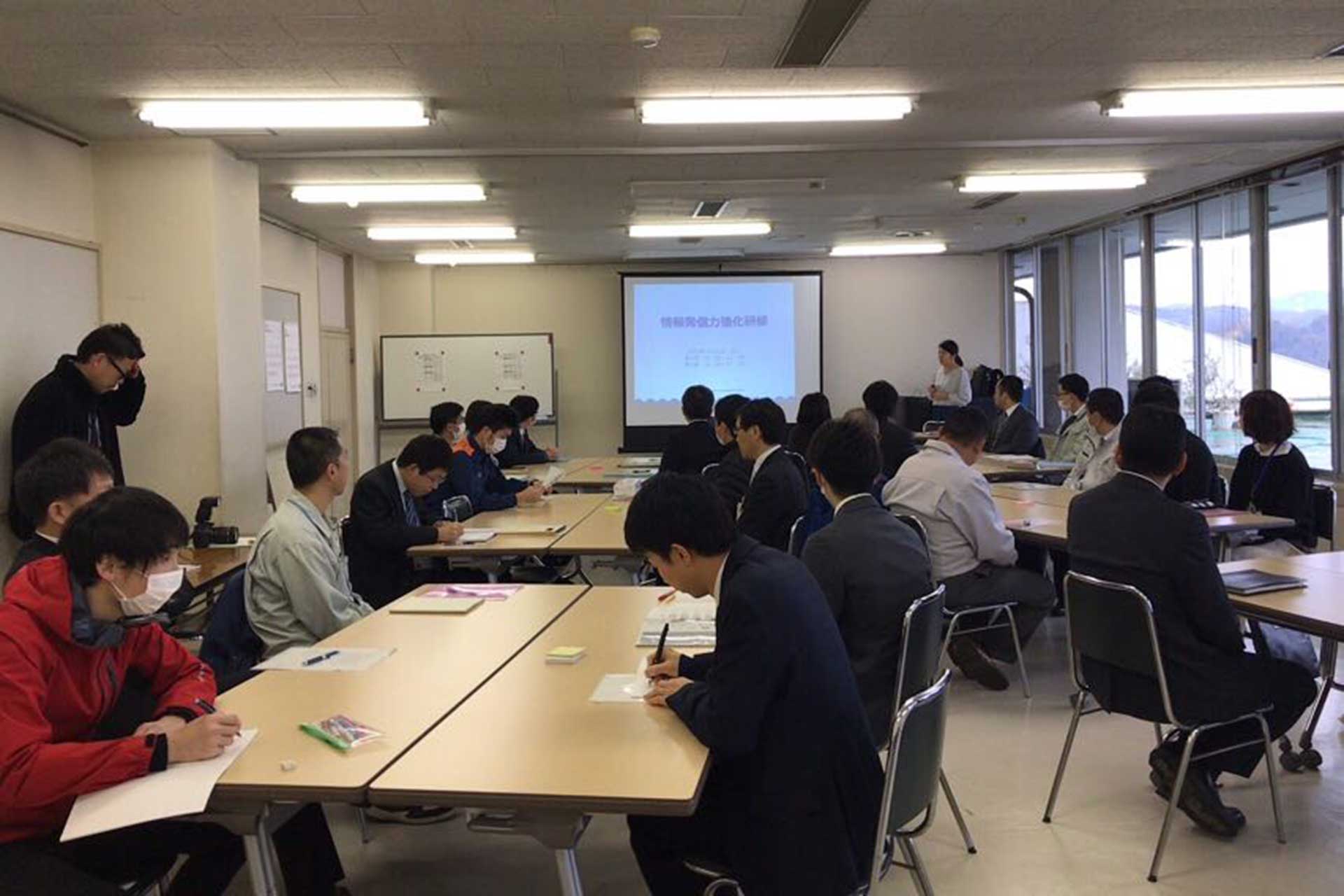
Approximately 40 people, primarily younger staff members, independently decided to attend the information dissemination course. Public relations is a process that aims to strengthen relationships, and for the town of Ninomiya, building these long term relationships and maintaining them was at the center of our message.
Mr. Yamashita:
I feel like there’s been a responsiveness to the changes in the PR leaders’ awareness. For example, before the training a supervisor from the PR department would edit all of the articles provided by each of the different departments to prepare them for publication. But now the author of each article consults with their department’s PR leader before it’s submitted to the PR department. You can also see a difference in the way the information on our website is arranged and expressed. I feel like the achievements in our training have started to penetrate the town hall staff, and I’m looking forward to what we can achieve next.
Right now we’re holding monthly meetings with the PR leaders to consider the best way to make the information on our website easier to understand. With each time we meet there are more and more people who voice their opinions. Before the meeting we have everyone take the “communication quiz” that we were given during the training course, and once everyone feels more at ease we start.
Takahashi:
I hope the changes in the PR leaders’ awareness steadily spreads to the other staff members. Even though there are 20 departments, they all share the same goal of working for Ninomiya and should be able to communicate across organizations.
Mr. Yamashita:
I think that’s right. We can’t keep doing things the way typical government work is done. In order to have the town hall work for everyone in the town, it’s important that each staff member seeks out the interesting aspects of their respective responsibilities. In order to do that, I think it’s necessary to change people’s awareness rather than the organizational structure. At the end of the training the participants told me about their eagerness for what they were going to do next, and it made me realize how even if people don’t normally show it, everyone here has a lot of enthusiasm for the work they do. I particularly want to get younger staff members to express their opinions more freely going forward.
Takahashi:
Was there anything about the training that you wish had been done differently?
Mr. Yamashita:
At first I think I was expecting to have the work from every department, including my own, reviewed from a professional’s critical viewpoint. At the same time though, we had to consider the younger staff members who were still getting used to their job responsibilities, which is why I’d requested that the course be designed around the fundamentals of public relations. The information was exactly what I was hoping for, so I think it would be great if next time not just the attendees, but every town hall staff member could participate.
Takahashi:
For us as well, we were extremely grateful to have a solid length of time to prepare for the course through surveys and interviews regarding the issues that needed to be addressed. That information, along with our consultations with you regarding the structure of the training, were what made everything go so smoothly.
Mr. Yamashita:
I know you were working with a limited budget, so I’m grateful that you visited us so many times. But I think that’s precisely why we were able to succeed in raising the awareness among the training participants.
Takahashi:
You’re right! I think it was really good for us both that we were able to meet in advance.
Ninomiya continues to develop by increasing the number of new initiatives between the town hall and the townspeople.
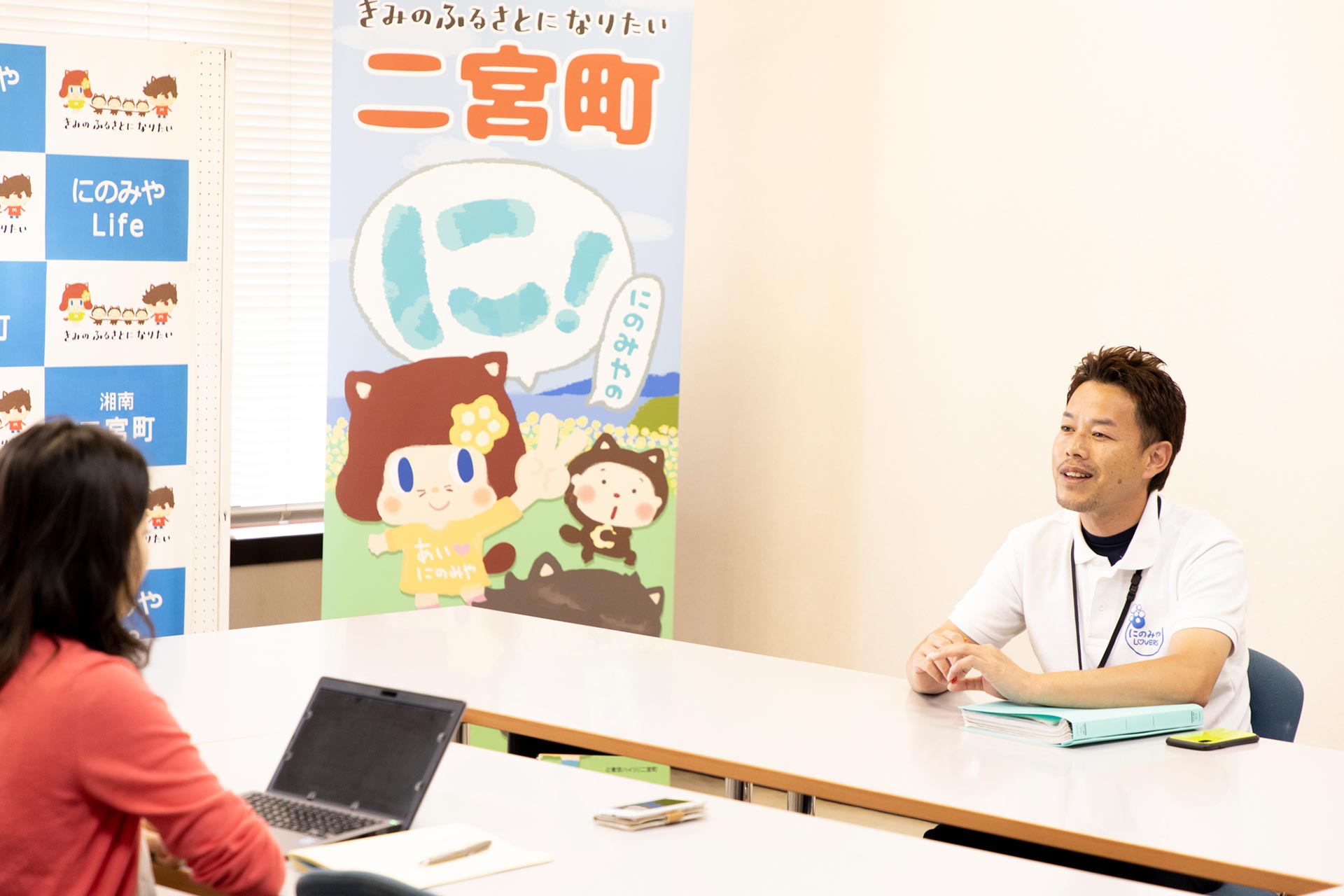
Mr. Yamashita talks about how Ninomiya’s PR slogan, “We want to be your hometown,” was something the townspeople suggested, and that raising their interest is the first step in building a more thriving community
Mr. Yamashita:
At this point the people who saw potential in Ninomiya and relocated here are currently involved with new projects throughout the town. This is a small town, but that also means there’s a closeness between the administrators and the local residents. My hope is that the town hall staff can serve as a support system for the initiatives the townspeople bring forward.
Takahashi:
I hope even more people from outside the town are drawn to Ninomiya once they hear about the interesting initiatives that arise from communication between the townspeople and the departmental PR leaders and other staff members. Speaking more personally, did you grow up in Ninomiya?
Mr. Yamashita:
My family moved here from Yokohama when I was 2 years old, so I’m also someone who relocated. From that point on I was raised here and fell in love with the town, so I knew I wanted to be involved in some way. When I heard that the town hall was hiring, I applied and was lucky enough to be hired. At this point I’ve had a wide variety of experience working in different departments, including economic, tourism, waste disposal, child support, social welfare, and city planning. There’s so much to learn in each department, and it only increases my appreciation for this town.
Ninomiya’s charm is that it’s surrounded by the ocean and the mountains, so it’s a place where you can live in peace in the midst of abundant natural beauty. In addition to that, it’s easy to get to central Tokyo and the morning trains almost always have a place to sit. It’s a place where both commuting and the natural environment can coexist.
Takahashi:
Every time I visit I feel a sense of relief. Given the work reforms that are currently being pushed forward, it’s possible to get home earlier even if one is working in central Tokyo, so there might be people who are OK with the idea of slightly increasing their commute time. What sorts of initiatives have you been putting forward to encourage people to move here?
Mr. Yamashita:
About 3 years earlier we started a community-led promotion strategy and have mainly been engaged in continuing to spread that information. The reason for doing this is because potential residents are more interested in hearing the voices of the local townspeople rather than information from administrative groups. It’s really heartwarming to see how many people love this town and are willing to cooperate. The PR slogan, “We want to be your hometown,” was something the Ninomiya Lovers, a local group dedicated to promoting the town, came up with.
Of course, this doesn’t mean that we should just rely on the townspeople to do everything for us. There are things they can do, there are things that administrators and staff members can do, and there are things that we can only do together, so we move forward by making adjustments accordingly. Ninomiya is dealing with a declining population, but it’s not something that the local administration can solve simply by encouraging people from other places to relocate. I think it’s only through an increased awareness of the issue among each and every local resident and allowing each person’s unique voice to be heard that we can efficiently and effectively promote the town.
In order to raise awareness with the local public, 2 summers ago we came up with the idea of having our staff members, who usually come into direct contact with the townspeople, wear polo shirts with our relocation slogan during the cool biz season. This was a voluntary project and everyone had to purchase their own shirts, so out of the 160 or so staff members I figured we’d have about 50 orders. Imagine my surprise when I saw that we ended up with 490 orders! We’d requested the shirts through a social welfare center for differently abled people, but since the order was beyond anything I’d imagined, I ended up going over to help them print the shirts. We had about 400 orders last year, and around 300 this year, so in the summer just about every staff member is wearing 1 of 8 different colored polo shirts. It brings a lovely atmosphere to the entire town hall.
From this one example I think you can see how the Ninomiya Town Hall is filled with passionate people. The natural environment here is gorgeous, but I think the most appealing aspect of Ninomiya is the people who live here. I often hear people who come to visit or who move here say that the townspeople are kind-hearted. Another aspect to consider is the fact that these same kind-hearted townspeople are the ones who continue to educate the people who work at the town hall.
Takahashi:
I also sensed a hidden passion among the town hall staff members every time we met. Precisely because this is a small organization it’s easy to move in unison, and precisely because it’s a small town it makes it easy to build relationships between the town hall and the local residents.
Mr. Yamashita:
Thank you very much. We’d love for you to keep an eye on what Ninomiya does moving forward.
Takahashi:
The pleasure was ours. Please let us know if there’s anything we can do to help in the future.
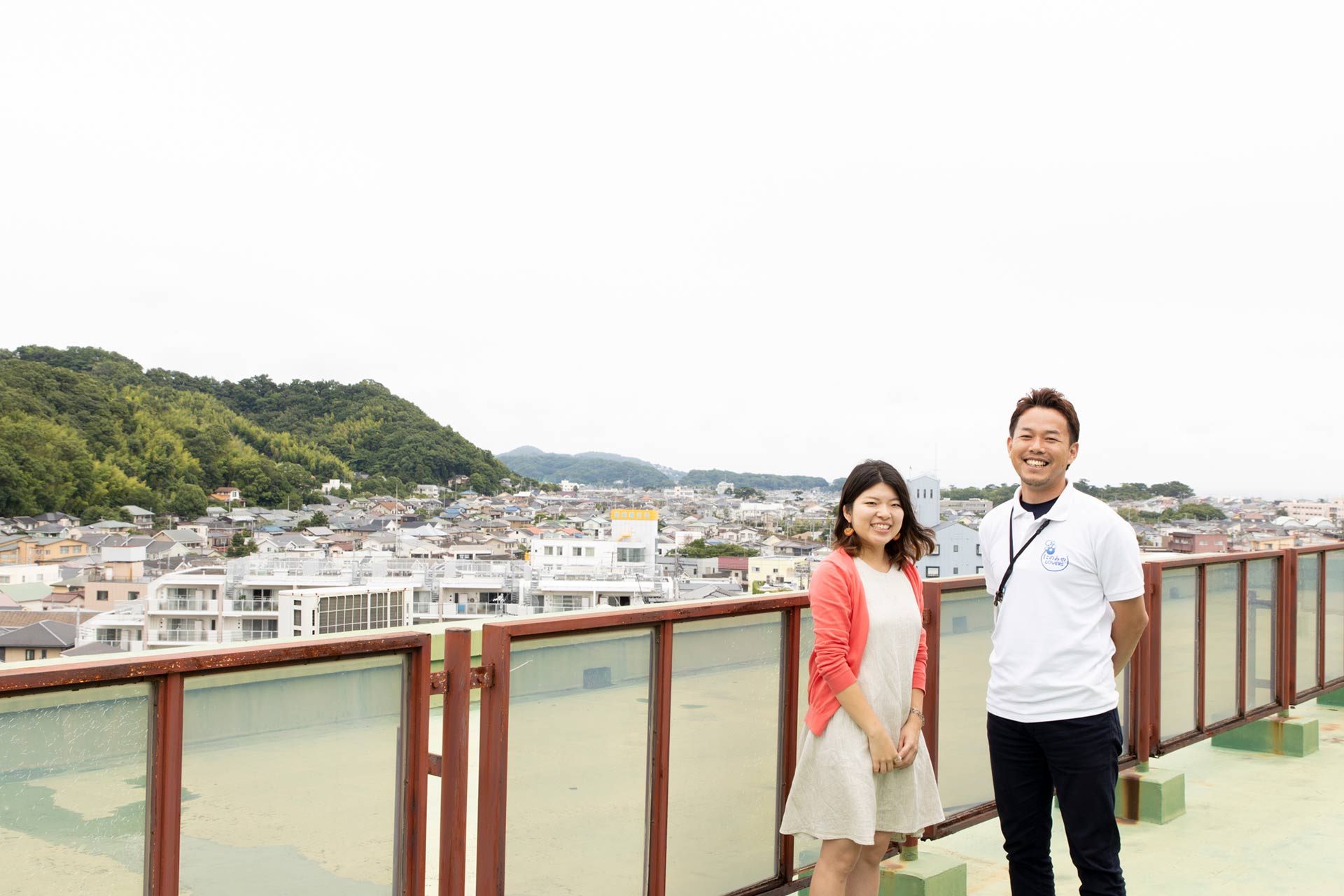
L to R: Takahashi of Hitoshizuku, and Mr. Yamashita of Ninomiya Town Hall
Photography: Chisato Hikita
Editiing: Akiko Yoshida
RECENT WORKS
| Name | Hitoshizuku Inc. |
| Address | 33 Nihonodori Naka-ku Yokohama Kanagawa 231-0021 JAPAN |
| Branch | Hamacho Odawara Kanagawa 250-0004 JAPAN |
| Phone | 81 045 900 8611 |
| info@hitoshizuku.co.jp |
| President | Hiroshi Kokubo |
| Established | March 2016 |
| Capital | 3,000,000yen |
| Business | Advertising & Public Relations Agency Planning & Produciton of Social Good Projects |
| Lawyer | Junna Tei / Yokohama First Law Office |
| Tax Advisor | Satoru Motokoide / Uniques Money Advisory |
| Labor and Social Security Attorney Office Work Innovation | |


